CFRP (carbon fiber reinforced plastic) generally consists of epoxy and carbon fiber.
Mitsui Chemicals made possible CFRP made from urethane and carbon fiber using proprietary technology.
Urethane CFRP (development)
Applications
Characteristics
- Basic Information
- Details of Characteristics
- Details of Applications
CFRP (carbon fiber reinforced plastic) generally consists of epoxy and carbon fiber.
Mitsui Chemicals made possible CFRP made from urethane and carbon fiber using proprietary technology.
The material offers high design potential and impact resistance, and it tends not to give off volatile organic compounds (VOCs).
It also adheres readily to nylon, polycarbonate, aluminum, and other materials, allowing insert molding without a pre-process.
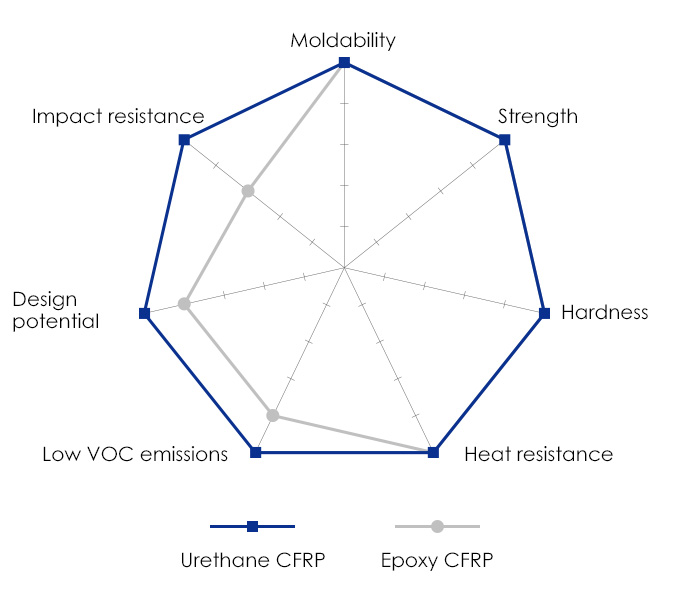
1. Light, strong and hard
CFRP is a material that offers greater strength and hardness than metal, despite its low weight.
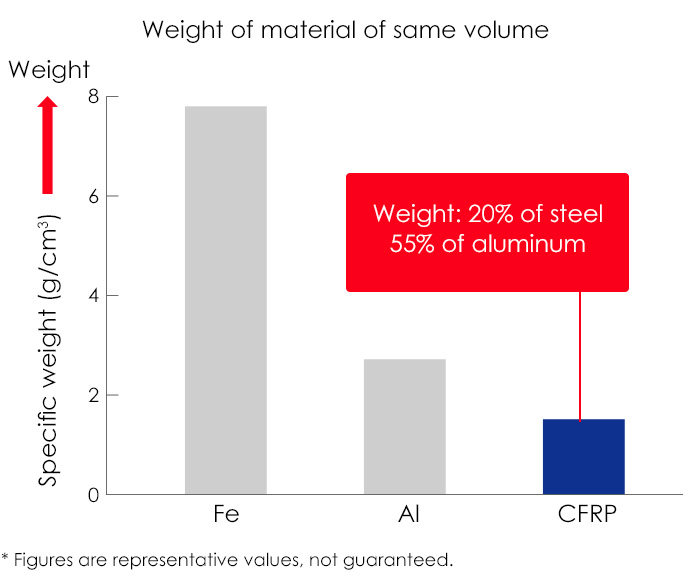

2. Impact resistance
Urethane CFRP is distinguished by having greater resistance to crushing than Epoxy CFRP when subjected to an impact.
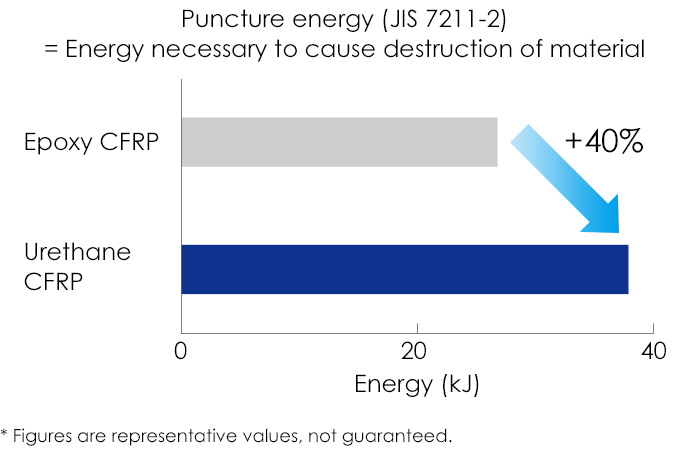
3. Excellent gloss and design potential
Urethane CFRP has glossier surface than epoxy CFRP, making it a more attractive material.
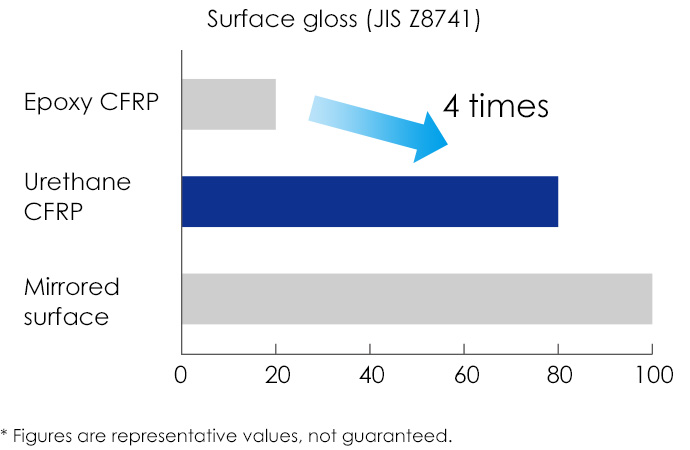
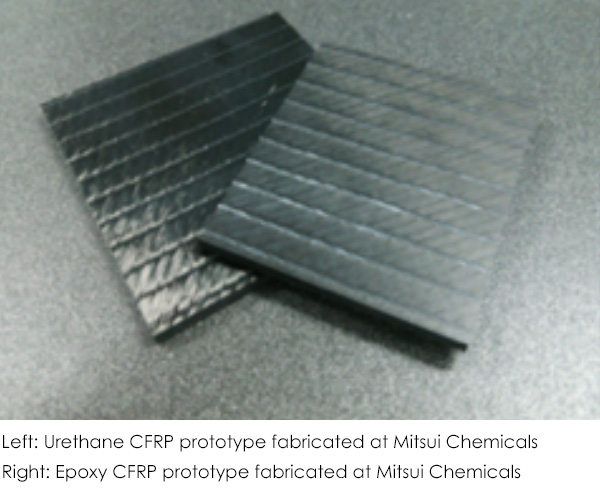
In addition, it can accommodate insert molding with a variety of films, which allows the appearance of its surface to be modified for design reasons.

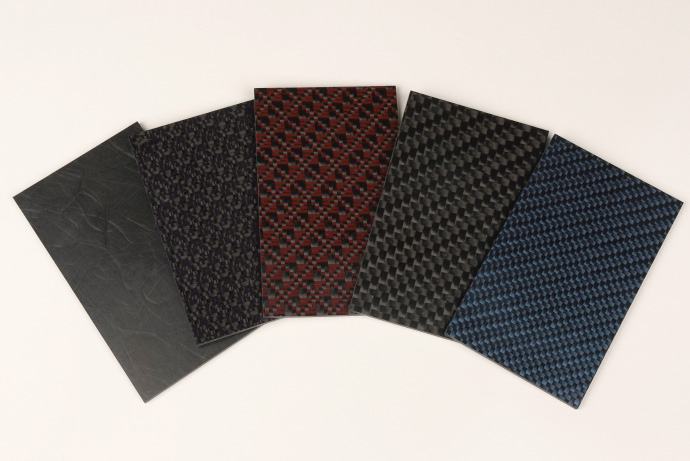
4. Not prone to give off volatile organic compounds (VOCs)
Urethane CFRP gives off fewer volatile organic compounds (VOCs) than epoxy CFRP, allowing it to be used in interior furnishings.
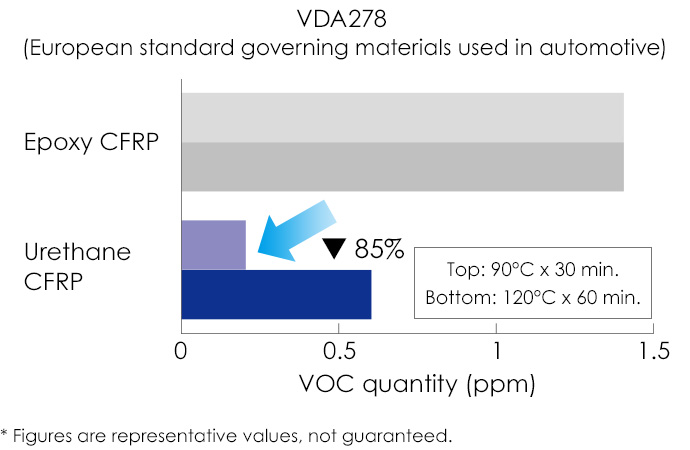
5. Moldable in a short period of time
Using its own molding equipment, the Mitsui Chemicals Group has been able to mold shaped products quickly (in about 5 min.) and at low fabrication cost.
HP-RTM: Suitable for molded products with comparatively complicated shape.

WCM: Suitable for molded products with comparatively simple shape.

Automotive parts
Since the resulting material is light, strong, and hard, it helps reduce weight and improve safety.
- - Hood
Interior materials
Since the material has gloss and gives off few volatile organic compounds (VOCs), it is suitable for use as an interior material with excellent design potential.
- - Floor and wall finishing materials
